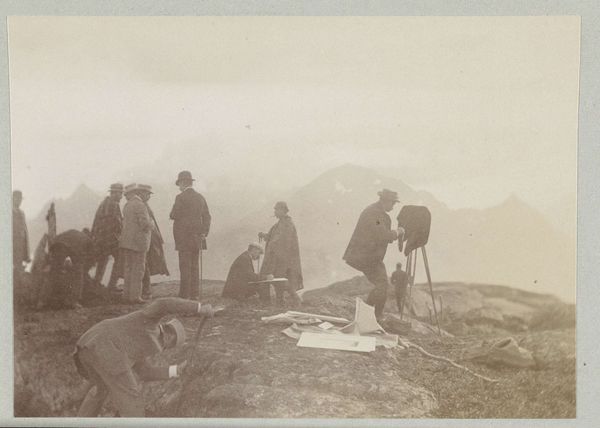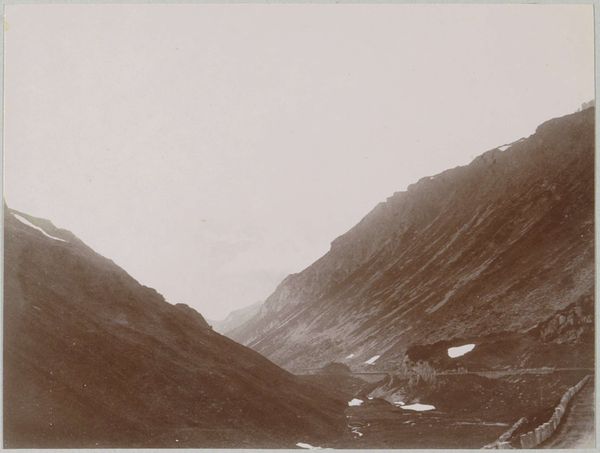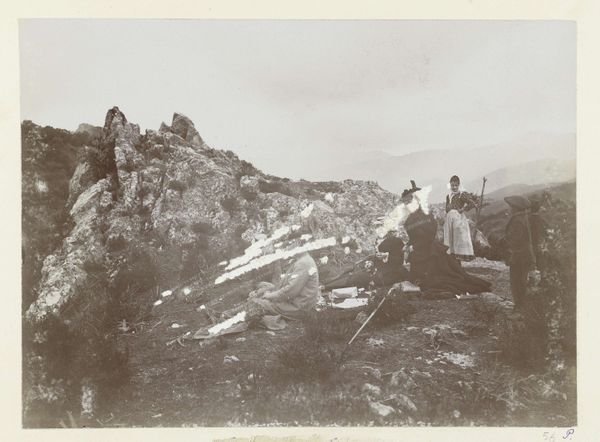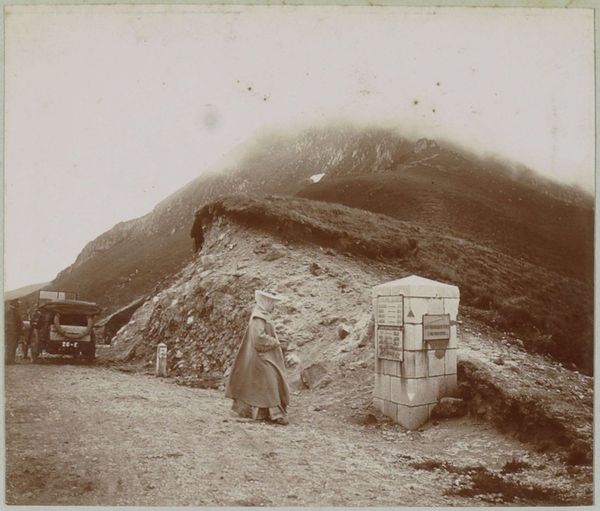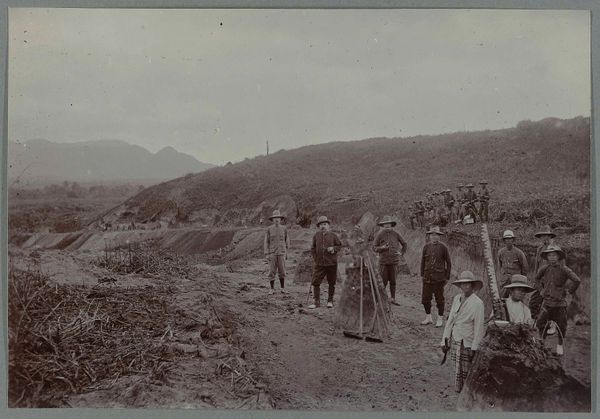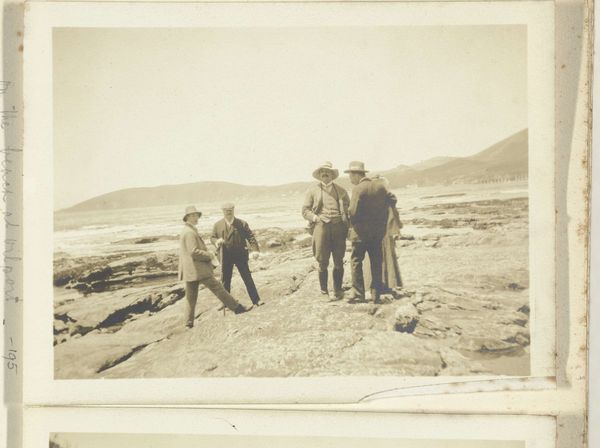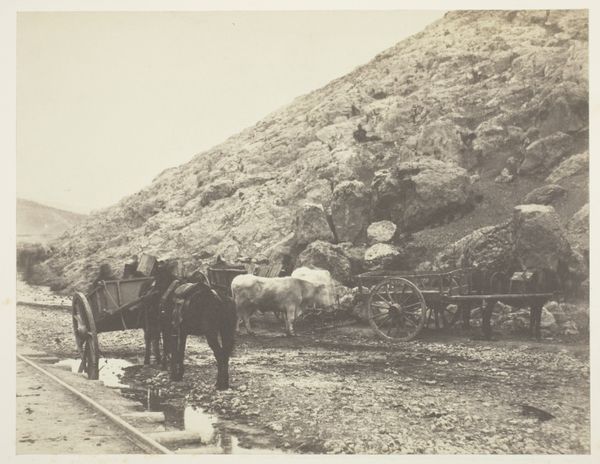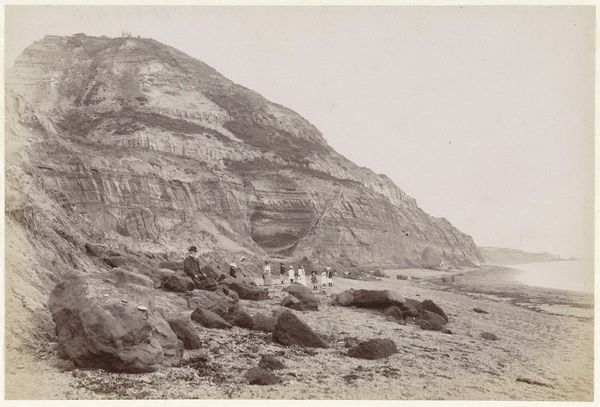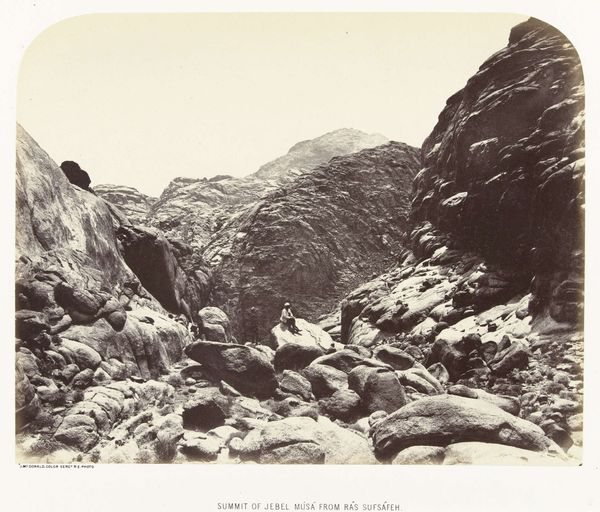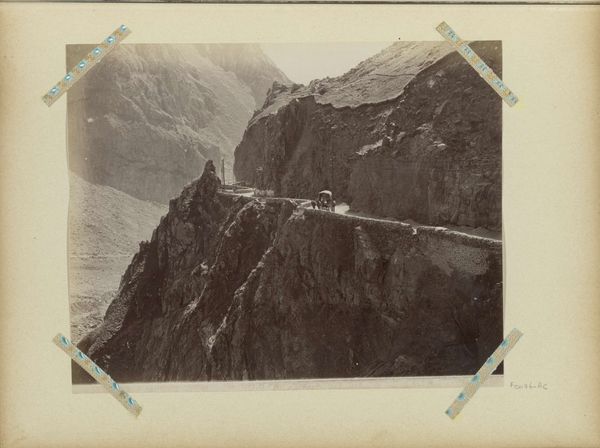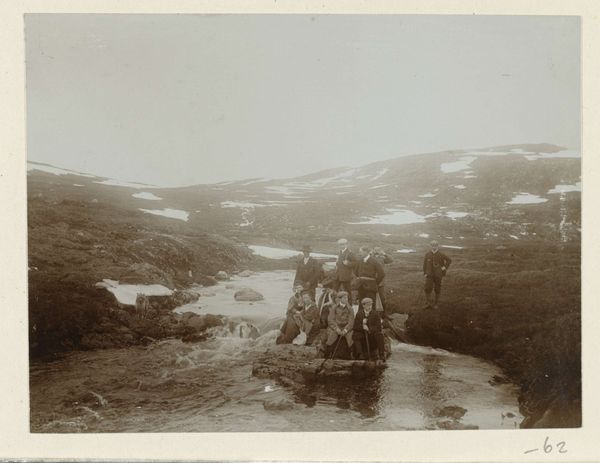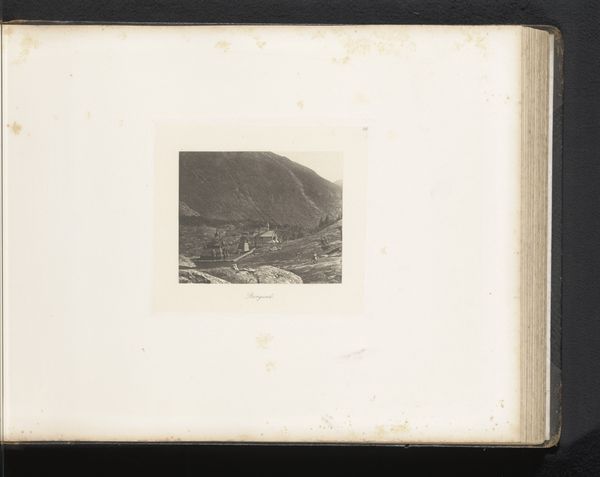
plein-air, c-print, photography
#
portrait
#
impressionism
#
plein-air
#
landscape
#
c-print
#
photography
Dimensions: height 79 mm, width 110 mm, height 314 mm, width 450 mm
Copyright: Rijks Museum: Open Domain
Curator: What a striking vista—this C-print photograph, titled “Groep mannen rust in het Noorse landschap”, or "Group of men resting in the Norwegian landscape," was captured in 1889 by Paul Güssfeldt. Editor: It's austere, almost sepia-toned. I feel a real sense of stillness, almost like I've stumbled upon a secret encampment high in the Norwegian mountains. But there's a photographic team with bulky old equipment setting up in the right of the image—which breaks the sense of reality to some degree, doesn't it? Curator: Absolutely, and I think that tension is key. We’re seeing not just the landscape but the *making* of the landscape as an image. The men resting—likely part of the photography crew itself—become components within the scene. Note the division of labor: Some resting, some working to reproduce what all see. Editor: Yes, it prompts considerations about class, too. Those who can afford leisure and those who facilitate the leisure and art-making itself. What story of Norwegian identity does this composition subtly propose? Curator: It also opens up considerations of plein-air photography. Getting this equipment into such terrain—the sheer logistics involved in image production in that era—is important to note. The photograph’s value lies as much in the performance of creating it. Editor: I’d add that seeing the photographers working also encourages us to see how landscape photography often obscures and aestheticizes the labor that produces it—like this very photograph. There are clear politics surrounding landscape, labor, and privilege. The choice of c-print also hints toward modern practices displacing what we traditionally consider landscape photography—such as, say, wet collodion. Curator: That friction is certainly part of its lasting impact. This c-print is less about capturing a moment and more about the conditions, physically and socially, that facilitate capturing that moment. Editor: Agreed. A seemingly serene scene then, but a testament to human intervention and the means of creating visual records—which are ultimately imbued with implicit meaning. Curator: And it also makes me appreciate how artists still manage to wrest such powerful images from difficult settings and complex logistics. Editor: It definitely makes you rethink the romance of landscape photography. There is often so much going on behind the scenes.
Comments
No comments
Be the first to comment and join the conversation on the ultimate creative platform.
